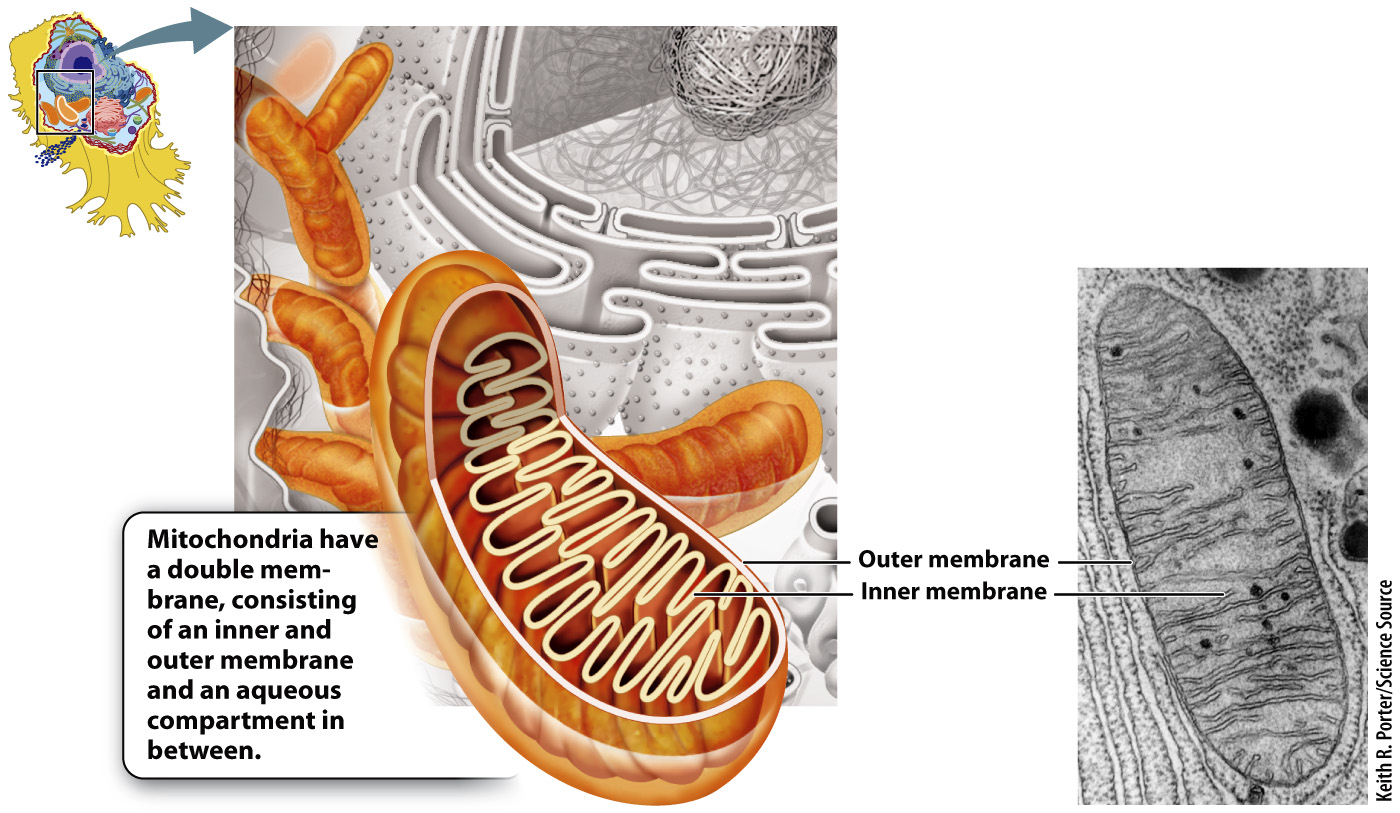Mitochondria are organelles that harness energy from chemical compounds like sugars and convert it into ATP, which serves as the universal energy currency of the cell. ATP is able to drive the many chemical reactions in the cell. Mitochondria are present in nearly all eukaryotic cells.
Mitochondria are rod-shaped organelles with an outer membrane and a highly convoluted inner membrane whose folds project into the interior (Fig. 5.27). A proton electrochemical gradient is generated across the inner mitochondrial membrane, and the energy stored in the gradient is used to synthesize ATP for use by the cell. In the process of breaking down sugar and synthesizing ATP, oxygen is consumed and carbon dioxide is released. Does this process sound familiar? It also describes your own breathing, or respiration. Mitochondria are the site of cellular respiration, and the oxygen that you take in with each breath is used by mitochondria to produce ATP. Cellular respiration is discussed in greater detail in Chapter 7.
